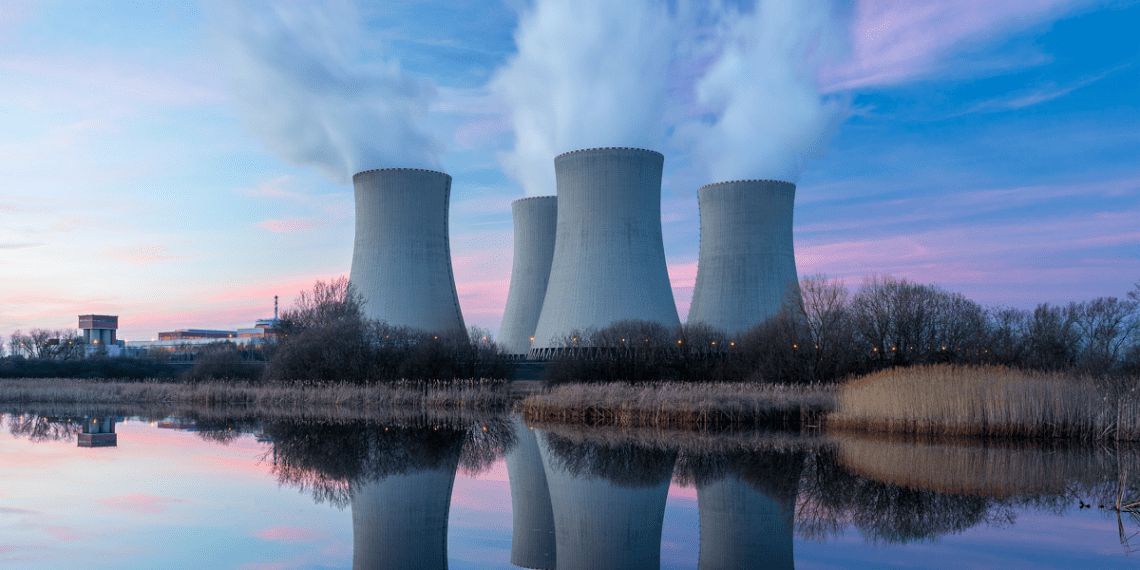After several years in the doldrums, uranium prices rose sharply in early 2022. They are forecast to continue to climb steadily, and potentially rapidly, over the next few years. According to Australia’s Office of the Chief Economist, following years of weakness, uranium prices stabilised at around US$50/lb after the rise. The growth reflected changing market fundamentals, with supply constrained by years of low investment.
Uranium prices are currently forecast to lift, from US$51/lb in 2022 to above US$60/lb by 2028 (in real terms). This is expected to encourage stronger production from Kazakhstan, Australia, Canada, and Namibia.
The Australian Department of Industry, Science and Resources’ latest resources and energy quarterly update suggests that price risks remain largely to the upside, with the price outlook heavily influenced by the rate of development for new deposits.
Uranium Consumption
According to the latest resources and energy quarterly update global uranium markets have continued to tighten. It suggested that geopolitical factors, including the Russian invasion of Ukraine, have led to renewed concerns over potential disruptions to supply and a consequent push towards greater supply security.
Nuclear deployments continue to expand, with a temporary decline in reactor constructions in 2022 expected to be reversed in 2023. Supply chains have adjusted successfully, as utilities reduce exposure to Russian sources following the invasion of Ukraine.
Uranium consumption is expected to grow steadily, supported by higher demand in China and other parts of Asia, Eastern Europe, and the Middle East.
South Korea’s new government, elected in 2022, has reversed the previous government’s plans to phase out nuclear power. Instead, the new government has announced plans to expand nuclear generation’s share from 27% to 30% by 2030, and to 35% by 2035. South Korea has advantages in nuclear deployment, given its expertise and relatively streamlined regulations. Further development of domestic nuclear energy could flow on to future export opportunities, with South Korea’s construction of reactors in the United Arab Emirates serving as a good model.
Japan appears to be accelerating its rate of reactor reconnections. Only 10 of Japan’s 54 reactors have been reconnected since 2011, but Japan’s Government is prioritising a swift opening of seven more, with at least 15 expected to be reconnected over the outlook period. The government has announced cabinet approval for new reactors to be constructed, and for operational life on existing reactors to be extended to 60 years. Surging coal and gas prices have added momentum to re- openings and constructions, as Japan seeks to reduce its vulnerability to global commodity prices. Nuclear plants are less vulnerable to commodity price swings, since uranium makes up only a small proportion of running costs, and only small amounts of mined material are needed.
Nuclear plant builds continue in Eastern Europe, with unit three of Slovakia’s Mochovce nuclear plant having been connected to the grid earlier this year. Mochovce 3 has seen its output increase to 55% – with its final trial run at 100% power expected in June. Unit 2 of Belarus’s Ostrovets plant was recently connected to the power grid and delivered its first kilowatt-hours to the country’s electricity system.
A French bill intended to support a more rapid expansion of new reactors has passed through the National Assembly (the country’s lower house) and is now under review in the senate. The bill follows an earlier announcement by President Macron for the construction of six new EPR2 reactors, with potentially more to follow.
In Canada, the Port Hope reactor in Ontario has had its operating licence renewed for another 20 years. In the US, the Vogtle 3 reactor has reached criticality and is expected to commence generation shortly.
In Belgium, the Doel 4 and Tihange 3 reactors have extended their operational time for another ten years, following an agreement between the Belgian government and French utility company Engie.
Trading Economics reported that the Chinese Nuclear Association stated that it is building 24 nuclear reactors, set to expand upon the 54 commercial reactors currently in operation, as the country ramps up efforts to achieve carbon-cutting goals. Nuclear energy output is also expected to pick up elsewhere after the US, France, Japan, UK, and Canada, agreed to form an alliance, and leverage resources to jointly shun Russian fuel producers from the global nuclear fuel market.
Despite no formal restrictions against the trade of Russian nuclear fuel, utilities have opted for long-term contracts with western miners, enrichers, and converters to hedge against the possibility of incoming sanctions. Consequently, Canada’s Cameco recorded more than double its earnings in the first quarter of 2023.
World production
According to Australia’s Office of the Chief Economist, production is building, with short-term and long-term growth expected.
The latest resources and energy quarterly update suggested that with new reactor deployments growing, stronger investment in supply will likely be needed to avoid a supply deficit emerging towards the end of the outlook period.
“While uranium costs are only a small share of overall costs for nuclear power, the current price trajectory provides strong incentives to potential suppliers and is likely to encourage greater investment in uranium production over time.”
“In the short term, this will likely be met through higher output from traditional suppliers. New output is expected from Australia’s re-opened Honeymoon mine (from 2024), while Canada’s large McArthur River mine is expected to resume full operation in the same year. Kazakhstan has tactically reduced output but could restore it again if prices continue to lift.”
By the second half of the outlook period, output growth will depend on new projects.
“Many of these are likely to be in Africa. African energy ministers met at the 2022 International Atomic Energy Agency General Conference to discuss ways for Africa to expand its role in global uranium markets. Africa has high quality, shallow deposits, and rising prices will support their exploration and development.”










